plant description
If you want your plant collection to grow faster than a family of happy little rabbits, look no further than the spider plant! Don’t be put off by the name – or the thought of a happy growing family of spiders in your home 😬
Spider plants are named for their soft bladed grass-like leaves that give them a full, tufted appearance and their incredible, web-like aerial root system. With a little TLC, your spider plant will grow an endless number of “babies” from its aerial root tips! Spider plants come in various shades of solid green, as well as many variegated varieties. Mature specimens put out small white star shaped flowers.
These notorious reproducers are tolerant of moderate light and patchy watering, making them super easy to care for. In this guide, we’ll show you how:
plant facts
| common names | Spider Plant, Airplane plant, Ribbon Plant |
| botanical name | Chlorophytum comosum |
| no. of species | n/a |
| family | Asparagaceae |
| biological life cycle | Perennial |
| foliage | Simple leaves |
| mature size | 1-1.5 feet tall, up to 2 feet wide |
| time to maturity | 2-4 years |
| origins | Western, Central, and Southern Africa |
| light conditions | Indirect light |
| soil type | Well-drained, moisture retaining |
| water ph | Slightly acidic to neutral (5.5-7.5) |
| usda zone | 9-11 |
| toxicity | None |
Popular Varieties/Related Plants:
- Spider Plant ‘Violet Queen’ (Cleome hassleriana)
- Spider Plant ‘Shamrock’ (Chlorophytum comosum ‘Shamrock’)
- Reverse or Variegated Spider Plant (Chlorophytum comosum ‘Vittatum’)
- Spider Plant ‘Bonnie’ (Chlorophytum comosum ‘Bonnie’); a curly variety with spiraling foliage
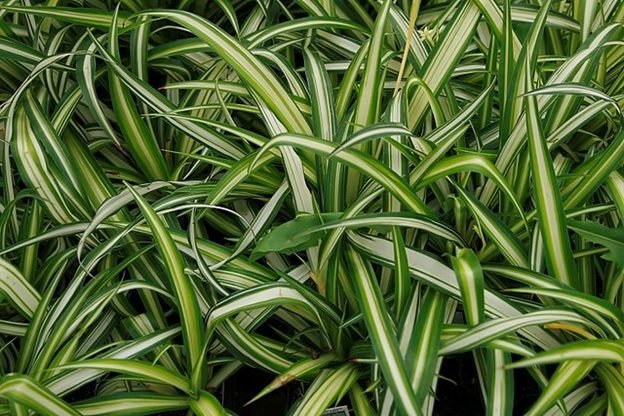
how to take care of a spider plant
These hanging plants are perfect “perchers” that will soak up pretty much any kind of light available in your living space. They are prized for their low maintenance needs and fun, tufted leaves. With some water every week or two, a little fertilizer during the growing season, and indirect light – this plant will happily brighten up any number of locations in your home.
light 🔆
Best light: Bright, indirect light
One of the reasons spider plants are so popular is their ability to tolerate lower light conditions. That doesn’t mean they can survive in a totally dark room, but they can tolerate more shade than some other indoor plants. In nature, spider plants grow in the understory of tropical forests, where they get a strong supply of indirect light year round. Spider plants prefer consistent exposure to bright, indirect sunlight throughout the day, but more isn’t always better: their leaves aren’t used to direct sunlight and can easily sunburn. Your spider plant might develop brown tips or go limp if it’s getting too much sun.
water 💧
Water needs: Once every 1-2 weeks
As tropical forest plants, spider plants don’t like their soil to dry out completely – but they also don’t like to get watered too frequently. They have a thick root system that will store moisture over several days between waterings, so watering once every week or two should keep your spider plant happy. Keep an eye on your spider plant’s coloration to ensure it’s getting enough water. If you notice the normally vibrant blades paling to a light green or taking on a translucent appearance, your spider plant needs water.
humidity 🌫️
Spider plants don’t have any fussy humidity requirements since they get enough moisture from soil waterings and have a dense root system to store it. A typical indoor humidity level of 30-50% will suit this guy just fine. Too much humidity or moisture can encourage fungal growth or pest infestations on spider plants, so be sure to not water it so frequently that the plant is always moist. On the other hand, if your spider plant gets too dry, it will start to brown or wilt and can take a few weeks of regular watering to perk back up. If you’re feeling spritzy, give your spider plant a few sprays now and then between waterings – but it isn’t required.
temperature 🌡️
Your spider plant will be happy with your home’s indoor temperatures in the 65-75 degree range. While the plant is native to tropical areas, its location under the forest canopy provides it with enough shade that it doesn’t have to tolerate too high of temperatures. Spider plants don’t love cool weather, so be sure your spider plant isn’t exposed to drafty windows or cold gusts from outside doors.
fertilizer 💩
In nature, the spider plant’s medium-sized fibrous roots grow a few inches deep into the forest topsoil, which provides it with a normal amount of nutrients throughout the year. As an indoor plant, it likes to receive a good dose of fertilizer once or twice a month during the growing season. Fertilize with either solid granules or add some liquid fertilizer to your spider plant’s water during the spring and summer. Too much fertilizer will cause the plant’s leaf tips to brown, so make sure to measure!
soil 🪨
Soil Type: well-drained, moisture retaining
pH level: Slightly acidic to neutral (5.5-7.5)
Spider plants like soil that drains well, but retains a little moisture. While the dense roots will retain some water, they don’t like to get too dry. The best soil mixture for a spider plant would be a 50/50 mix of potting soil and coarse material like sand or orchid bark. You can add sphagnum moss or Leca to your spider plant’s soil to help retain moisture and drain excess water. Allow the soil to dry moderately between waterings, but don’t let it dry as much as you would for a plant that likes very dry soil.
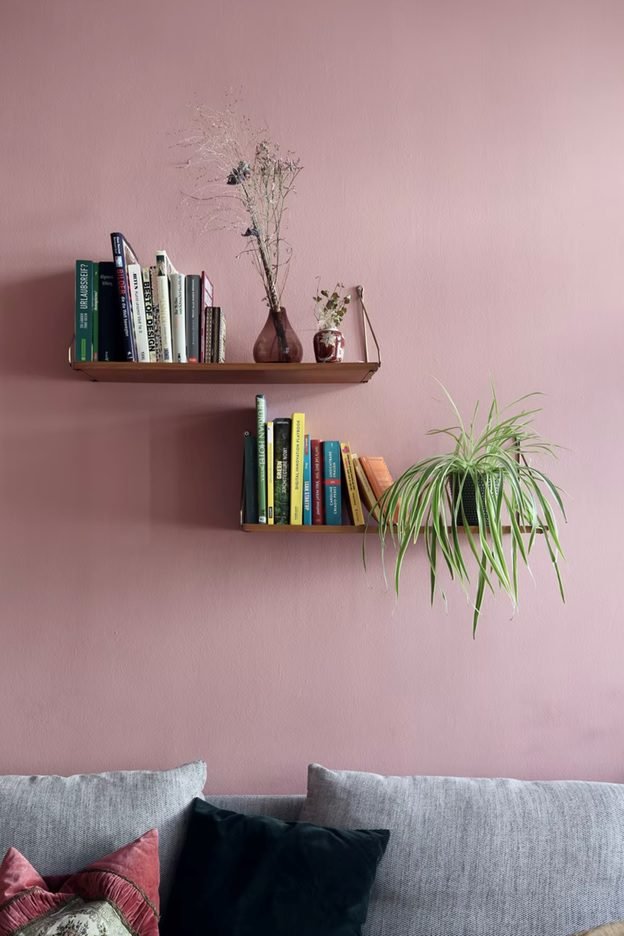
repotting 🪴
Your spider plant doesn’t need to be replanted too frequently once it has reached a mature size, and it likes to be planted in smaller pots. The thick roots can become rootbound, however, so it may need to be repotted every couple of years, especially when it’s young and still growing to maturity. Although spider plants like a little more moisture in the soil, they don’t like standing water, so be sure your new pot has drainage holes and is filled with well-draining soil.
propagation 🌱
This is how to propagate your spider plant:
- At maturity (2-4 years), your spider plant will shoot a stolon into space (a long, white/yellow stem-like growth) containing small, flowering buds
- Allow the stolon to grow, trimming back the mother plant to focus energy into the new growth
- Small spider plants will grow from the stolon over time
- Once the baby spider plant at the end of the stolon has grown leaves approximately 10 cm long, use sharp gardening shears to remove the plantlet just below its node from the stolon
- Repot and you’ve got another spider plant!
If you have a mature specimen that isn’t producing these baby spider plants, you can cut it in half to propagate one.
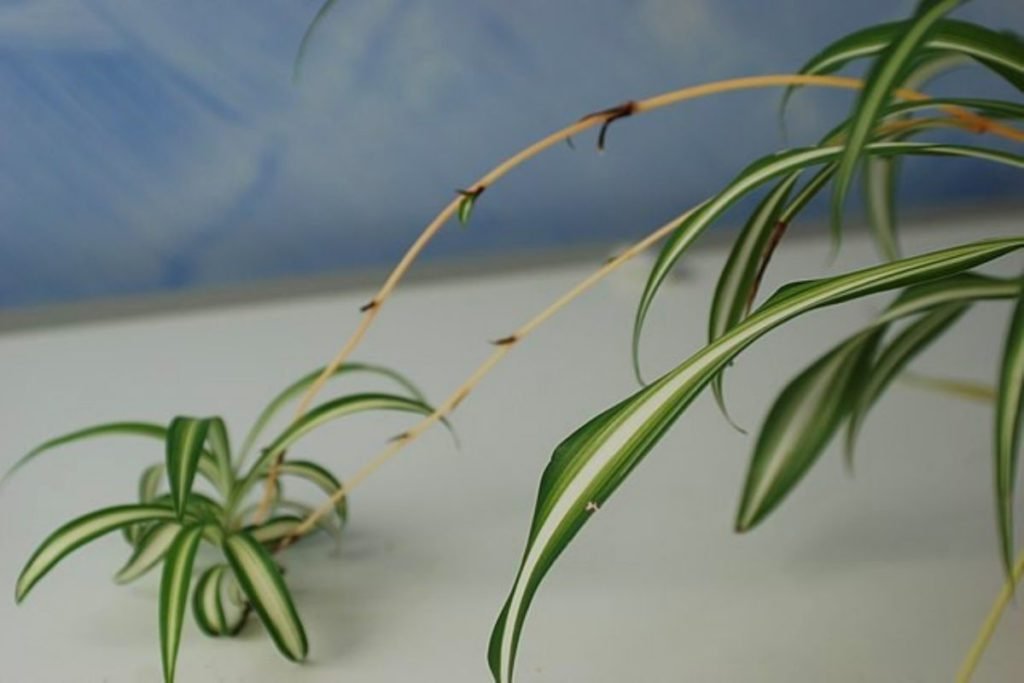
pruning 🌿
Although they are somewhat fast-growers, a spider plant won’t need much pruning other than old under-leaves and spider plant babies that wilt and will brown with age.
pests and diseases 🐛
Spider plant sap, contained in the long, soft leaves, is especially attractive to mealybugs and aphids. If either of these pests makes a meal of your spider plant, you may notice its leaves yellowing or becoming discolored with tiny brown or black spots. Spider mites also find spider plants particularly attractive (no relation to the plant 😂). If they are present, you will notice small webs and red dots across your plant’s leaves. To rid your plant of pests, give it a good rinse in the shower and an application of your preferred pest prevention. Clip away any damaged leaves.
As this plant prefers well-drained soil, standing water can ferment disease that will harm a spider plant. Its dense roots may succumb to root rot if standing in water too long, which will affect the rest of the plant. Wet soil can also breed fungus, mold, and potentially fungus gnats as well. When in doubt about the soil moisture level, check with your finger or a moisture reader, or give it a little extra time before watering again to be on the safe side.
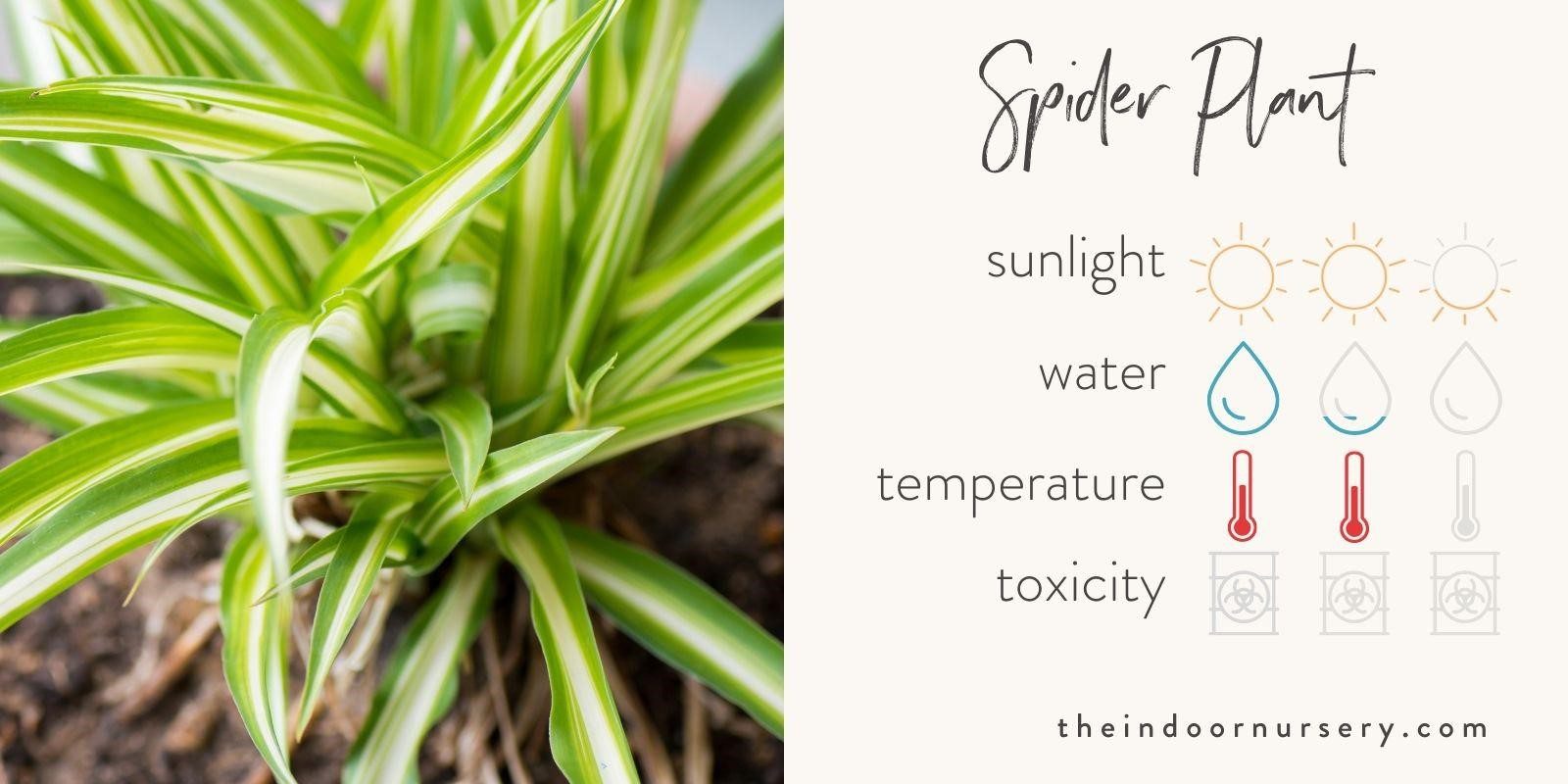
plant care tips
- Placement is everything. Spider plant leaves can lose their color if in the wrong lighting. Too much direct sunlight can result in pale leaves. Direct UV rays, while they can scorch plants and turn them brown, can also contribute to breakdown of some of the cells in the plant tissue and reduce chlorophyll production, leading to pale greens, yellows, and whitish leaves. If your plant’s colors are fading in direct sun, move it into a shadier area where it only gets indirect light.
- Place a formerly variegated spider plant in bright light to bring out its stripes. Variegated spider plant leaves revert to a solid color when they reach maturity and start to reproduce. They may also lose their variegation if they don’t get enough light. A variegated plant may regain its stripes when put in a brighter area with more indirect light.
Common Problems / FAQs:
Water stress and spider plants.
Water stress is the most common problem associated with spider plants. Since they have medium watering requirements, it can be difficult to know if they need more or if they can sit a while longer. Too much water can lead to problems like fungal diseases, rot, or pests, and too little water can lead to dehydration of roots or leaves. Overwatering a plant is always more harmful than underwatering, so monitoring the soil moisture, or erring on the side of caution with longer waterings in between, will help you keep your plant well-hydrated.
Why does my spider plant have brown leaf tips?
The tips of your spider plant may turn brown when the water you’re providing it is too hard (mineral-rich) or if it’s receiving too much fertilizer. These plants like a normal amount of nutrients: not a lot, and not too little. If your plant’s tips are browning, do a soil test to check the nutrients to see if it’s getting too much fertilizer. You can also check your water’s pH and mineral content (especially fluoride), and consider using filtered water for your spider plant if the level is high. Once you know your plant’s habits and requirements, you will be able to nail down a regular watering schedule so new brown leaf tips won’t appear.
Shop our recommendations
- The Best Hydroponic Tower For Indoor Gardening
- 10 Best Worm Composter Bins For Easy Homemade Compost
- The Best pH Meter For Soil
- The 6 Best Dehumidifiers For Grow Tents
- The Best Complete Indoor Hydroponic Grow System
- 5 Best Grow Light Strips For Indoor Plants
- TESTED: Aerogarden vs Click and Grow Smart Garden
- Our *hands on* MARS HYDRO TSW 2000 review (with photos)
- 7 Best Hygrometers For Indoor Plants
- The Best Coco Coir For Your Plant’s Healthiest Root System Ever

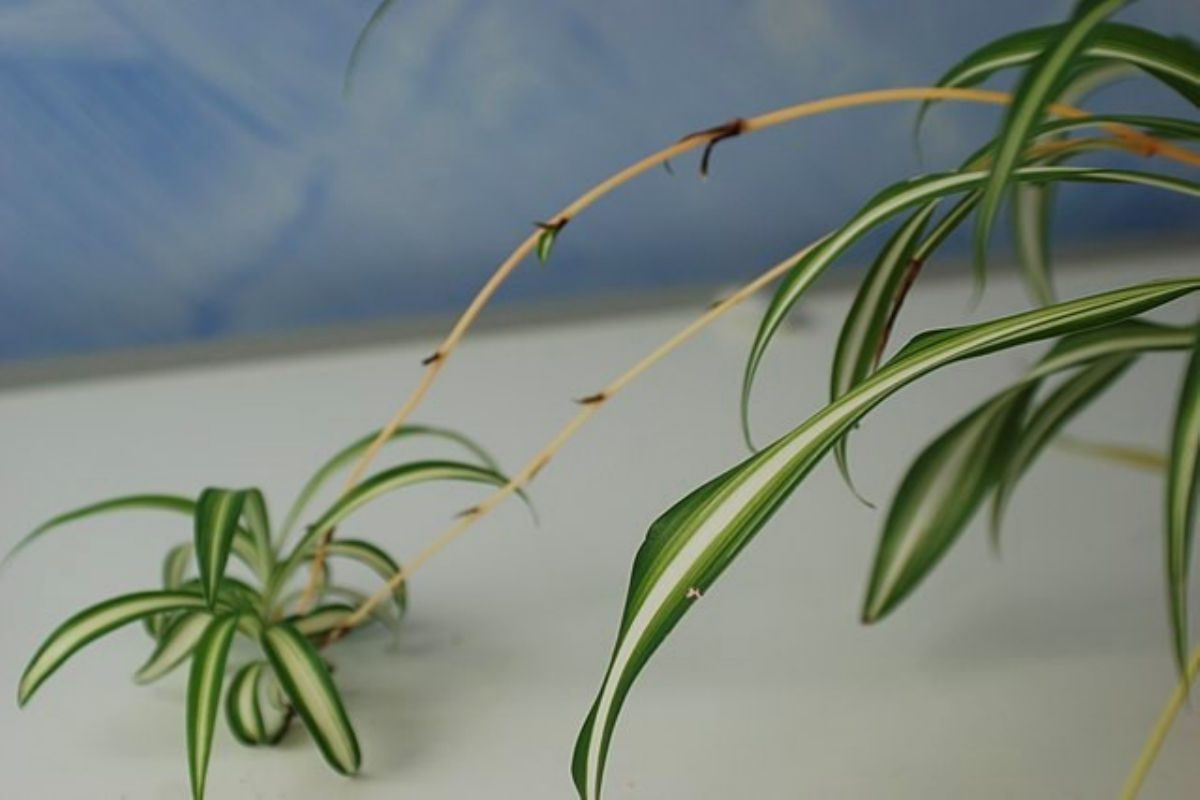
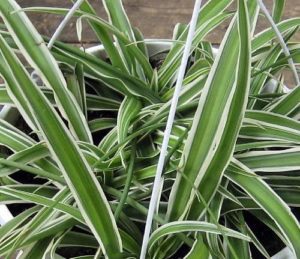
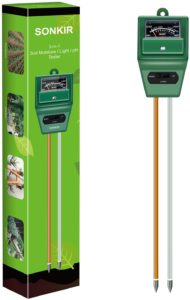
Hey, Marcia! Thanks for reading :) gosh, that's a great idea to double up on your watering globe and spike.…